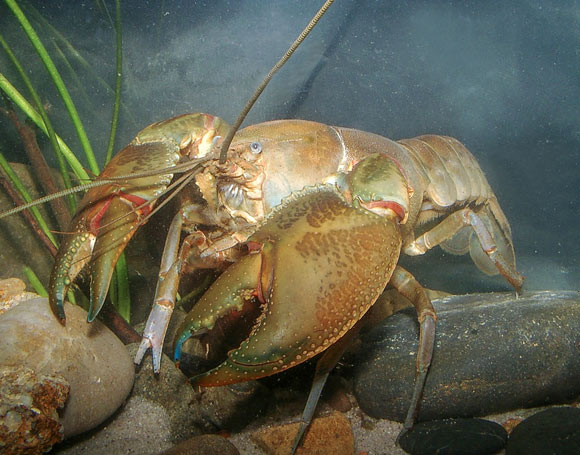Scientists have described a new species of the crayfish genus Cherax from the Murray-Darling Basin in eastern Australia.

The swamp yabby (Cherax latimanus). Image credit: McCormack & Raadik, doi: 10.11646/zootaxa.5026.3.2.
Cherax is the most widespread genus of fully aquatic crayfish in the southern hemisphere.
Commonly known as yabbies, members of the genus belong to the crustacean family Parastacidae.
They inhabit lakes, rivers, and streams across most of Australia and New Guinea.
The new species is known from the mid-Murray River area of the Australian states of New South Wales and Victoria.
Scientifically named the swamp yabby (Cherax latimanus), it is only the third species of Cherax found naturally occurring in the Murray-Darling Basin.
“We’d heard rumours from landholders and river-users that there was a different and larger yabby living in the Barmah Forest — little did we know it would take so long to track it down,” said co-author Dr. Tarmo Raadik from the Arthur Rylah Institute for Environmental Research and Museums Victoria.
The swamp yabby looks similar to the well-known and widespread common yabby (Cherax destructor), but is much larger and has uniquely shaped broad claws.
The species is not found in permanent aquatic habitats such as streams or billabongs, spending the majority of its time in extensive, terrestrial, burrow networks containing some water, in ephemerally wet habitats such as drainage lines, roadside drains, depressions, swamps and cleared areas of pasture in lowland to foothill areas.
It is occasionally found in stream habitats but only during large flood events when burrow systems are inundated.
“The exciting discovery of the swamp yabby is a significant biodiversity achievement, which adds to the wealth of important information used to manage and protect Victoria’s waterways and its aquatic creatures that call them home,” said James Todd from the Department of Environment, Land, Water and Planning, a state government department of Victoria.
“It’s the first time in 80 years that a new yabby species in the Murray-Darling Basin system has been formally described, making the swamp yabby only the third species known to naturally occur in the Basin.”
“It’s found in deep clay soil burrows in northern Victoria’s Goulburn, Broken and Ovens River catchments, and as far north as Deniliquin in New South Wales.”
The discovery is described in a paper in the journal Zootaxa.
_____
R.B. McCormack & T.A. Raadik. 2021. Cherax latimanus sp. nov., a new burrow-dwelling freshwater crayfish (Decapoda, Parastacidae) from the mid-Murray River catchment, Australia. Zootaxa 5026 (3): 344-374; doi: 10.11646/zootaxa.5026.3.2







